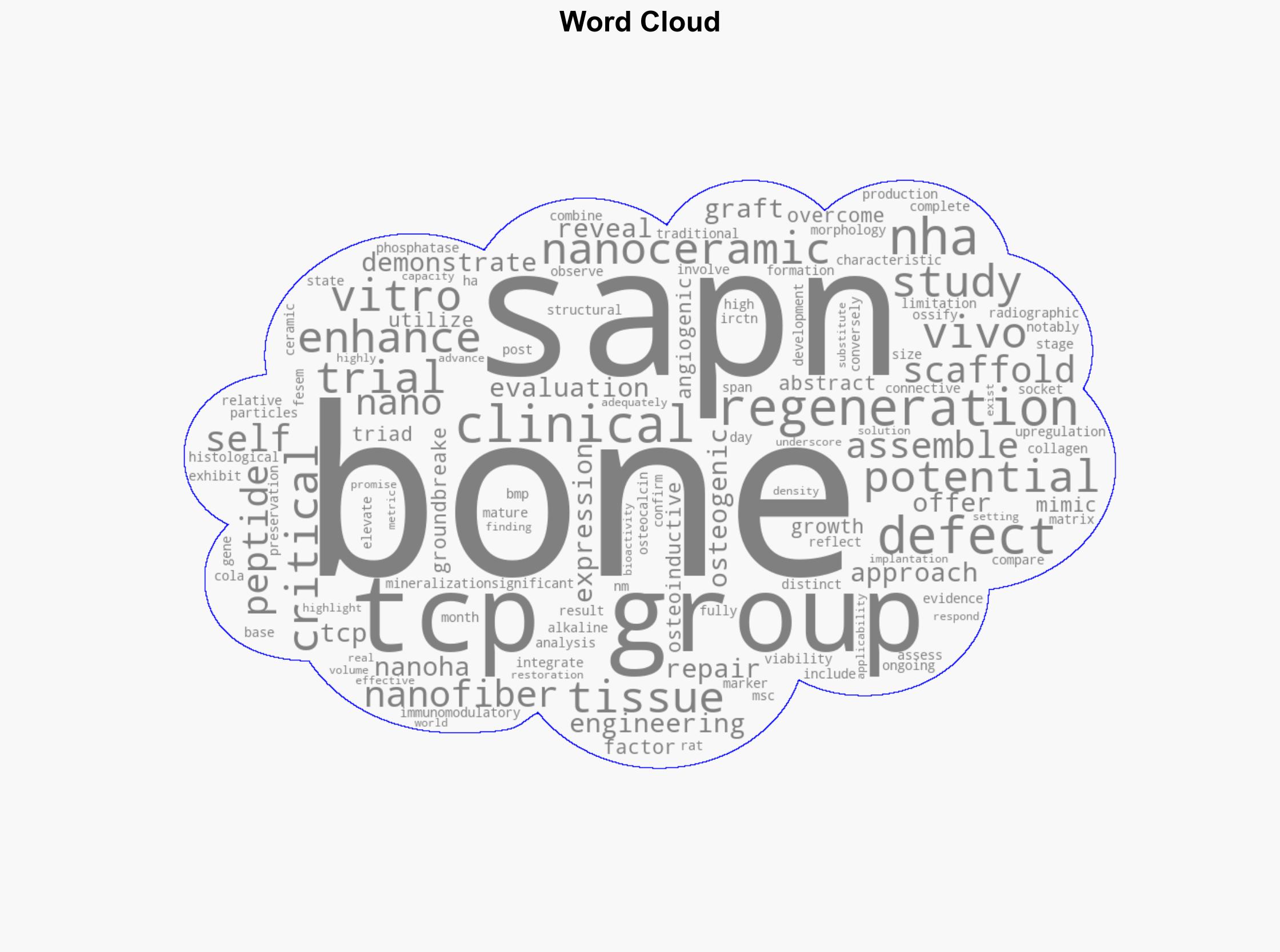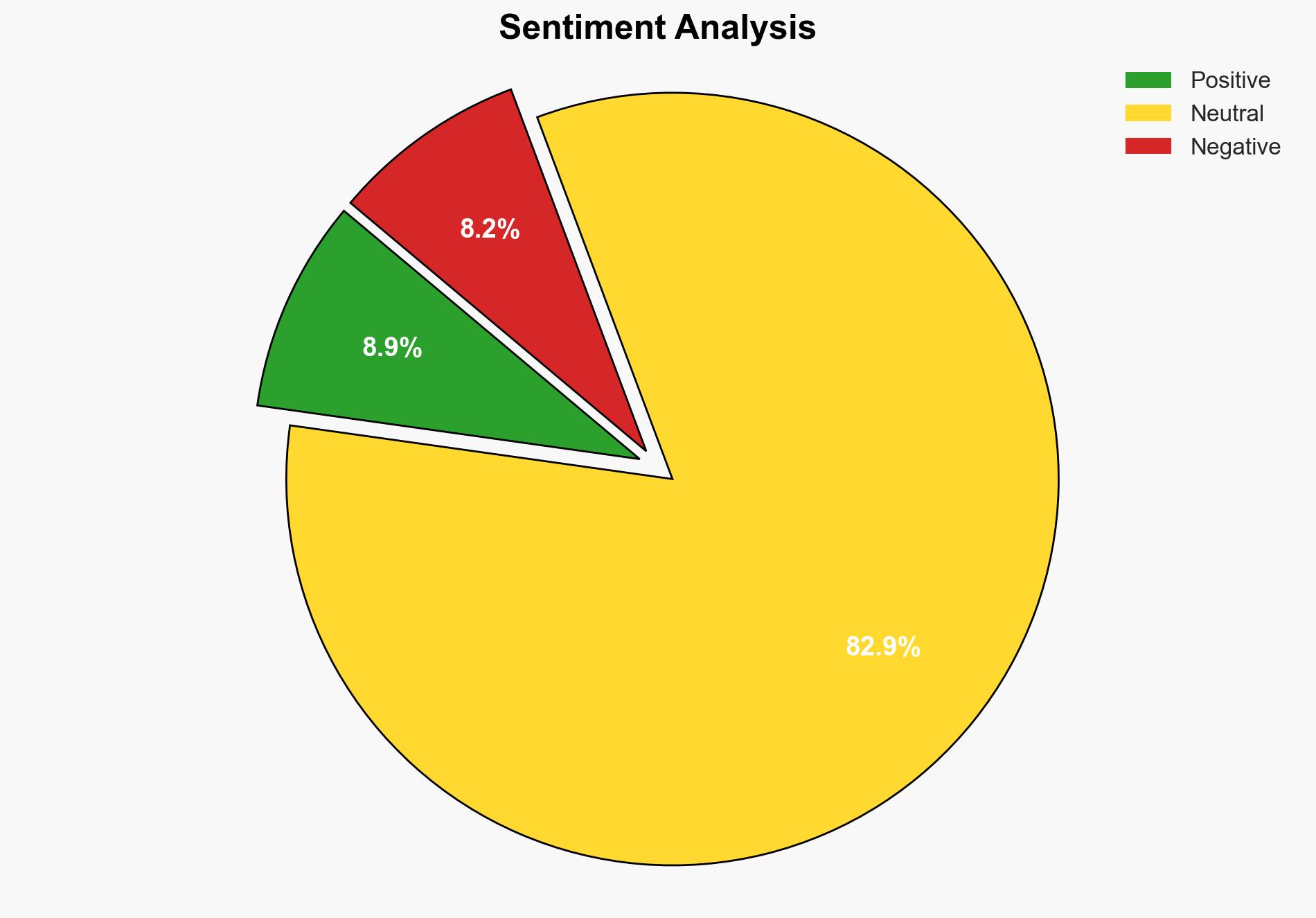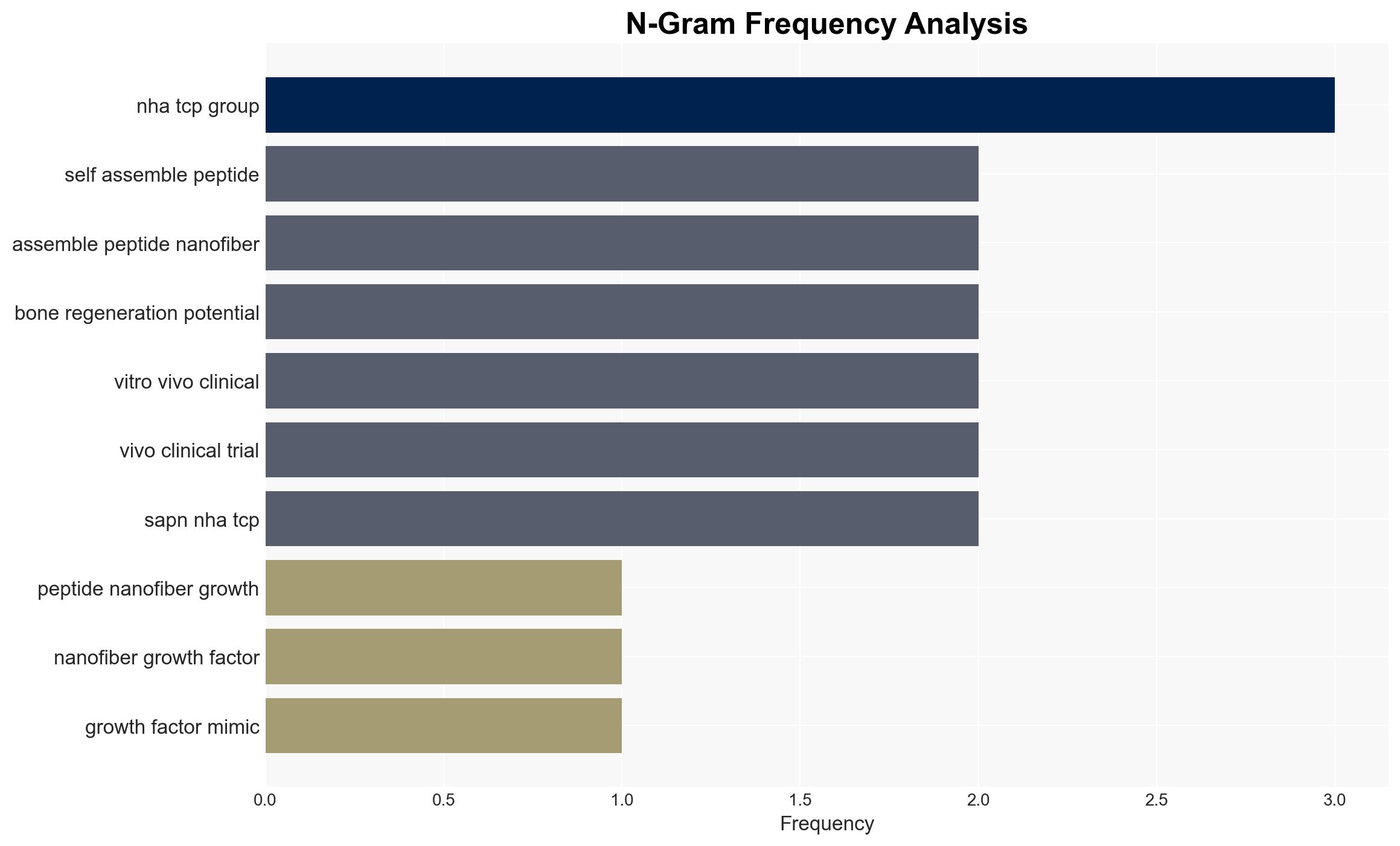Self-assembling peptide nanofibers as growth factor-mimicking scaffolds enhancing the bone regeneration potential of nanoceramics a triad of in vitro in vivo and clinical trial studies – Royal Society of Chemistry
Published on: 2025-11-13
AI-powered OSINT brief from verified open sources. Automated NLP signal extraction with human verification. See our Methodology and Why WorldWideWatchers.
Intelligence Report: Self-assembling peptide nanofibers as growth factor-mimicking scaffolds enhancing the bone regeneration potential of nanoceramics a triad of in vitro in vivo and clinical trial studies – Royal Society of Chemistry
1. BLUF (Bottom Line Up Front)
The study presents a promising advancement in bone tissue engineering using self-assembling peptide nanofibers (SAPNs) combined with nanoceramics to enhance bone regeneration. The most supported hypothesis is that SAPNs significantly improve the bioactivity and osteogenic capacity of nanoceramic scaffolds, offering a superior alternative to traditional bone graft substitutes. Confidence in this hypothesis is moderate due to the need for further validation in diverse clinical settings. Recommended action includes continued research and potential strategic partnerships with biomedical firms for commercialization.
2. Competing Hypotheses
Hypothesis 1: SAPNs combined with nanoceramics significantly enhance bone regeneration, providing a superior alternative to traditional grafts.
Hypothesis 2: The observed improvements in bone regeneration are primarily due to the inherent properties of nanoceramics, with SAPNs playing a minimal role.
Hypothesis 1 is more likely due to the comprehensive in vitro, in vivo, and clinical trial evidence demonstrating enhanced osteogenic markers and bone volume density with SAPNs. Hypothesis 2 lacks support from the study’s findings, which highlight the distinct contributions of SAPNs in improving bioactivity.
3. Key Assumptions and Red Flags
Assumptions: The study assumes that results from rat models and initial clinical trials are generalizable to broader human populations. It also presumes that the integration of SAPNs does not introduce unforeseen long-term complications.
Red Flags: Limited diversity in clinical trial participants may skew results. Potential bias in reporting positive outcomes due to commercial interests in SAPN technology. The absence of long-term follow-up data raises concerns about sustained efficacy and safety.
4. Implications and Strategic Risks
The successful implementation of SAPN-enhanced nanoceramics could disrupt the bone graft substitute market, affecting companies reliant on traditional methods. There is a risk of intellectual property disputes as competitors may seek to replicate or challenge the technology. Additionally, regulatory hurdles could delay market entry, impacting financial projections and strategic planning for stakeholders.
5. Recommendations and Outlook
- Actionable Steps: Encourage further clinical trials across diverse populations to validate findings. Explore partnerships with established biomedical companies to leverage distribution networks and regulatory expertise.
- Best Scenario: Successful commercialization of SAPN-enhanced scaffolds leads to widespread adoption, improving patient outcomes and generating significant revenue.
- Worst Scenario: Regulatory challenges and unforeseen complications stall market entry, resulting in financial losses and reputational damage.
- Most-likely Scenario: Gradual adoption in niche markets with incremental improvements in clinical validation and regulatory approval processes.
6. Key Individuals and Entities
The report does not specify individual names. Entities involved likely include research institutions, biotech firms, and regulatory bodies overseeing clinical trials.
7. Thematic Tags
Biomedical Innovation, Bone Tissue Engineering, Nanotechnology, Clinical Trials, Regulatory Affairs
Structured Analytic Techniques Applied
- Causal Layered Analysis (CLA): Analyze events across surface happenings, systems, worldviews, and myths.
- Cross-Impact Simulation: Model ripple effects across neighboring states, conflicts, or economic dependencies.
- Scenario Generation: Explore divergent futures under varying assumptions to identify plausible paths.
Explore more:
Regional Focus Briefs ·
Daily Summary ·
Methodology





